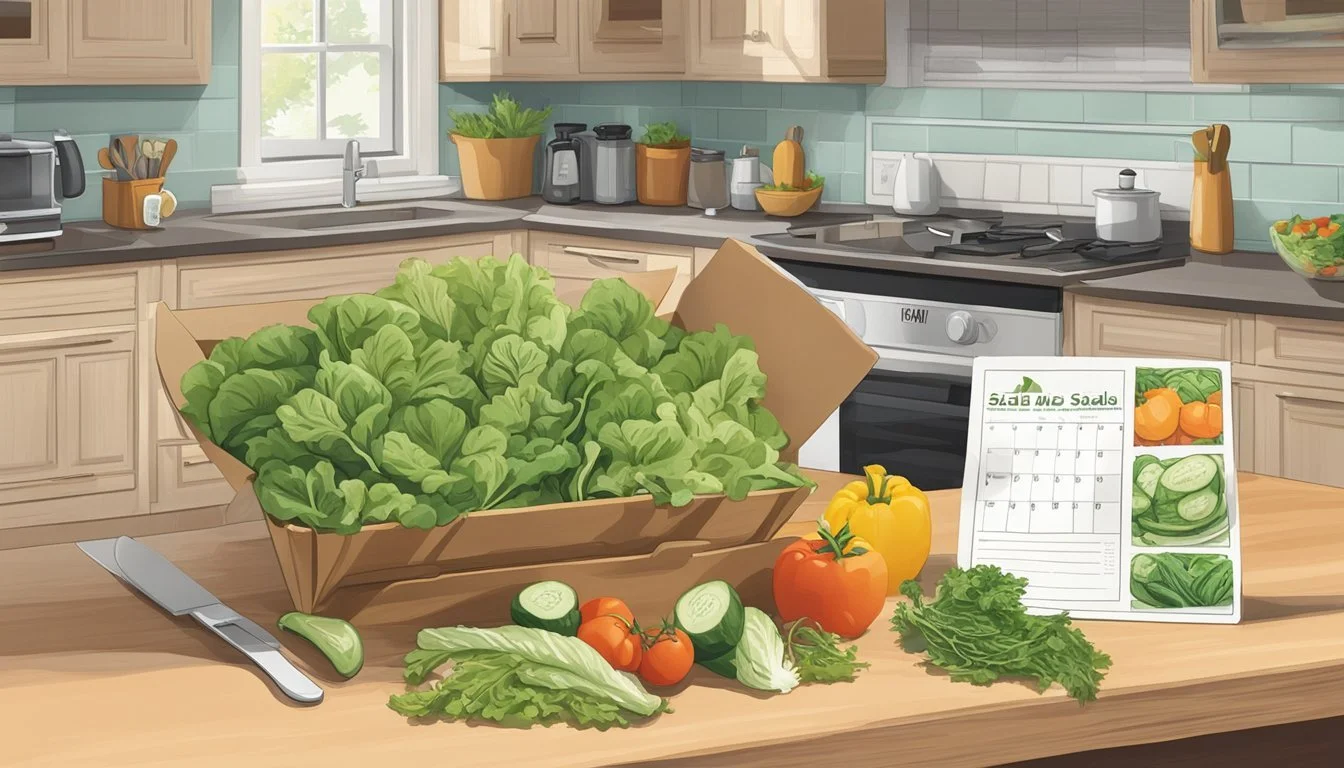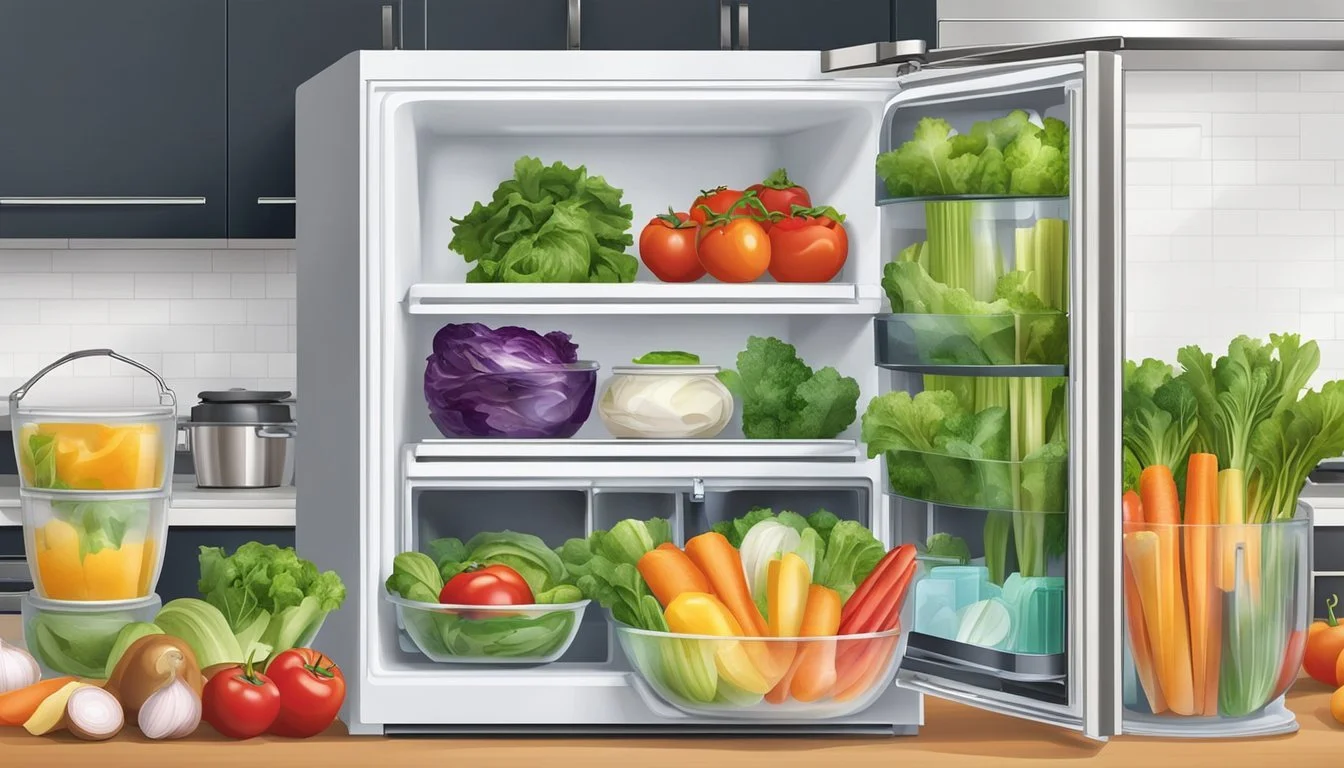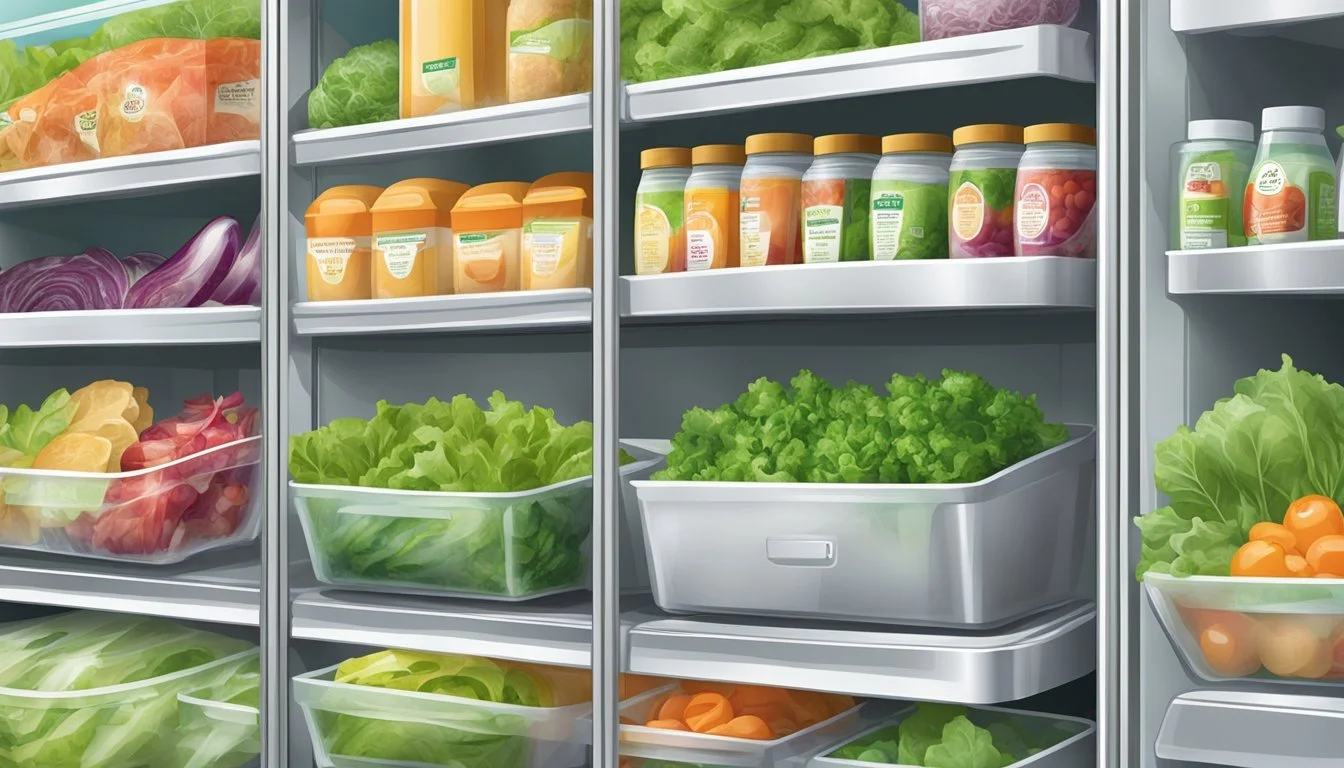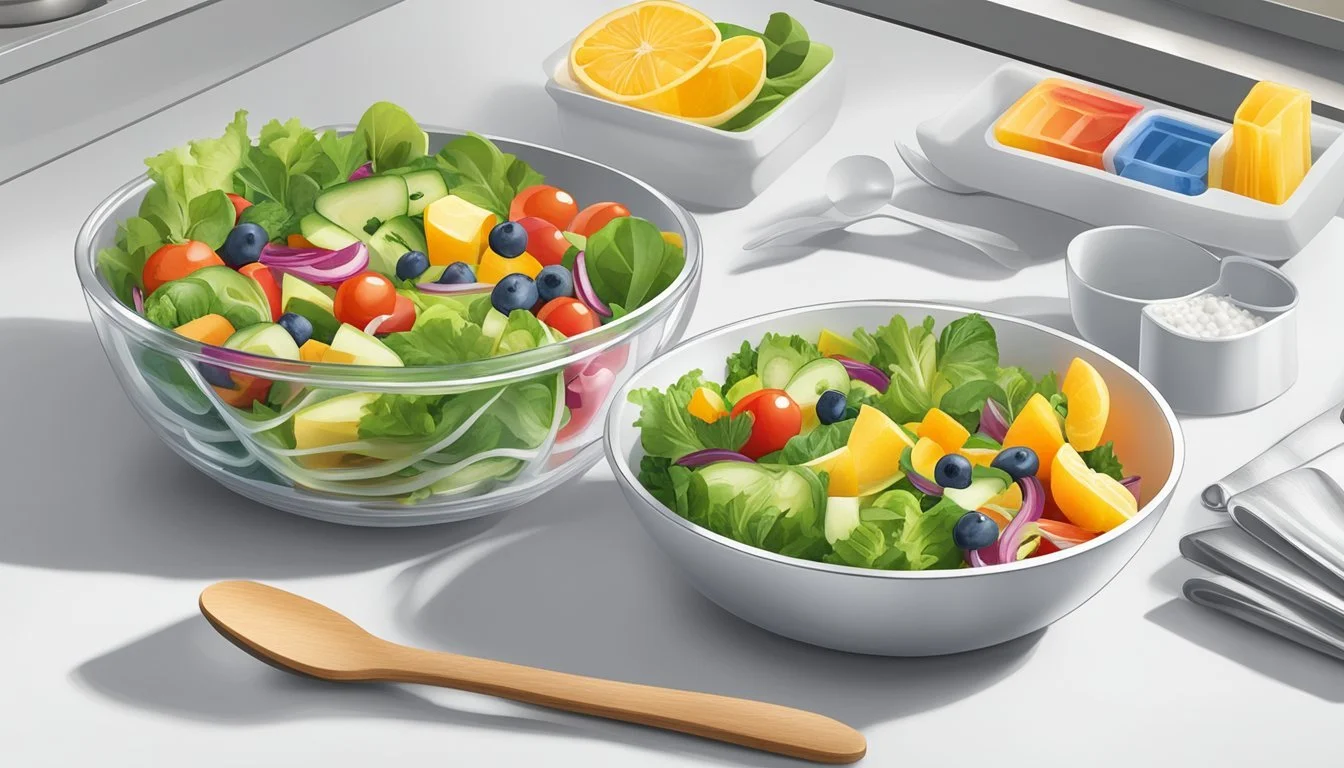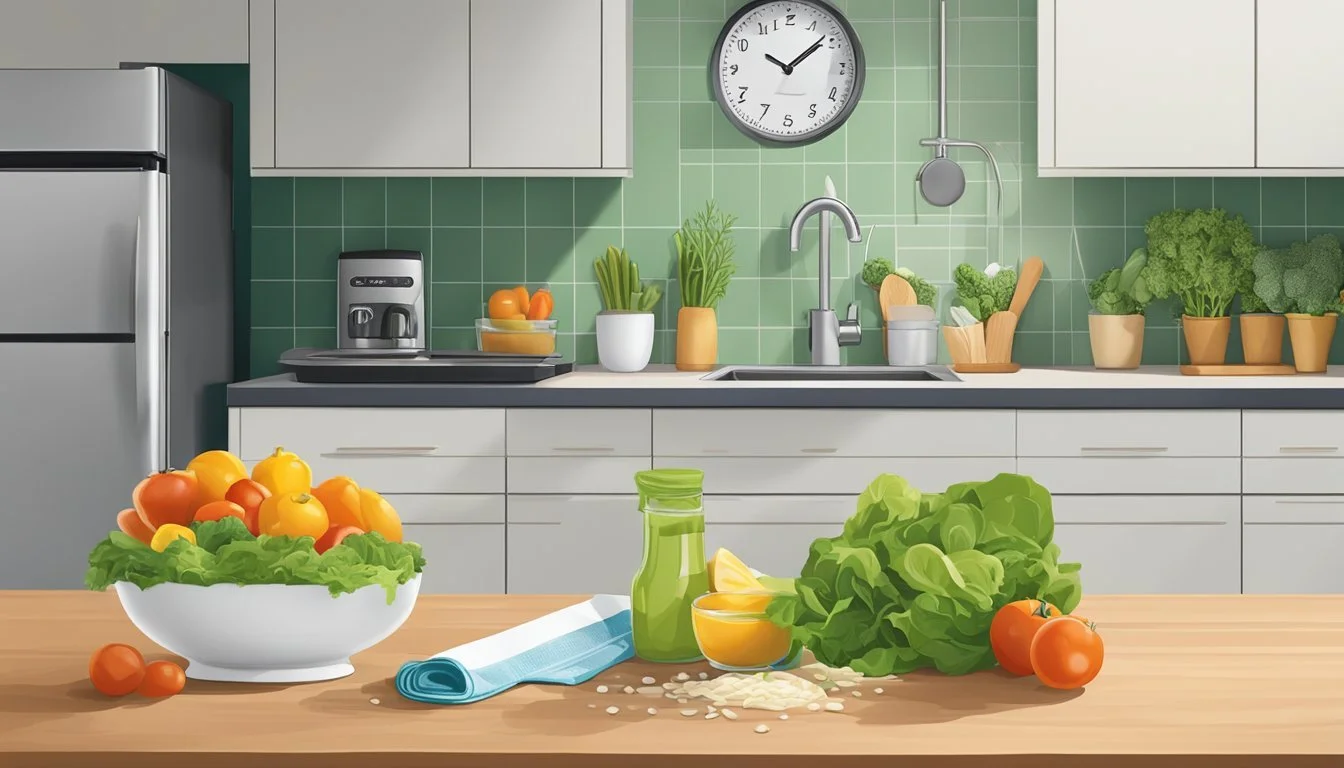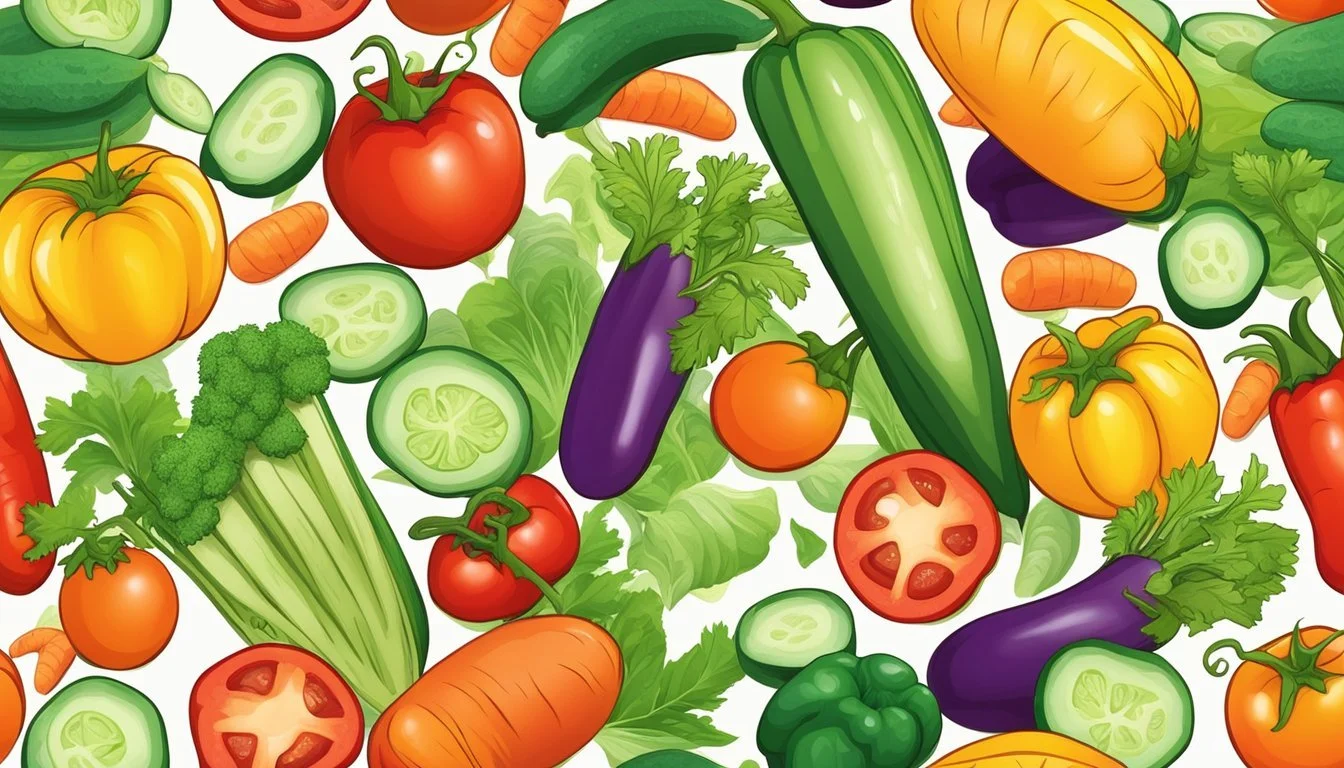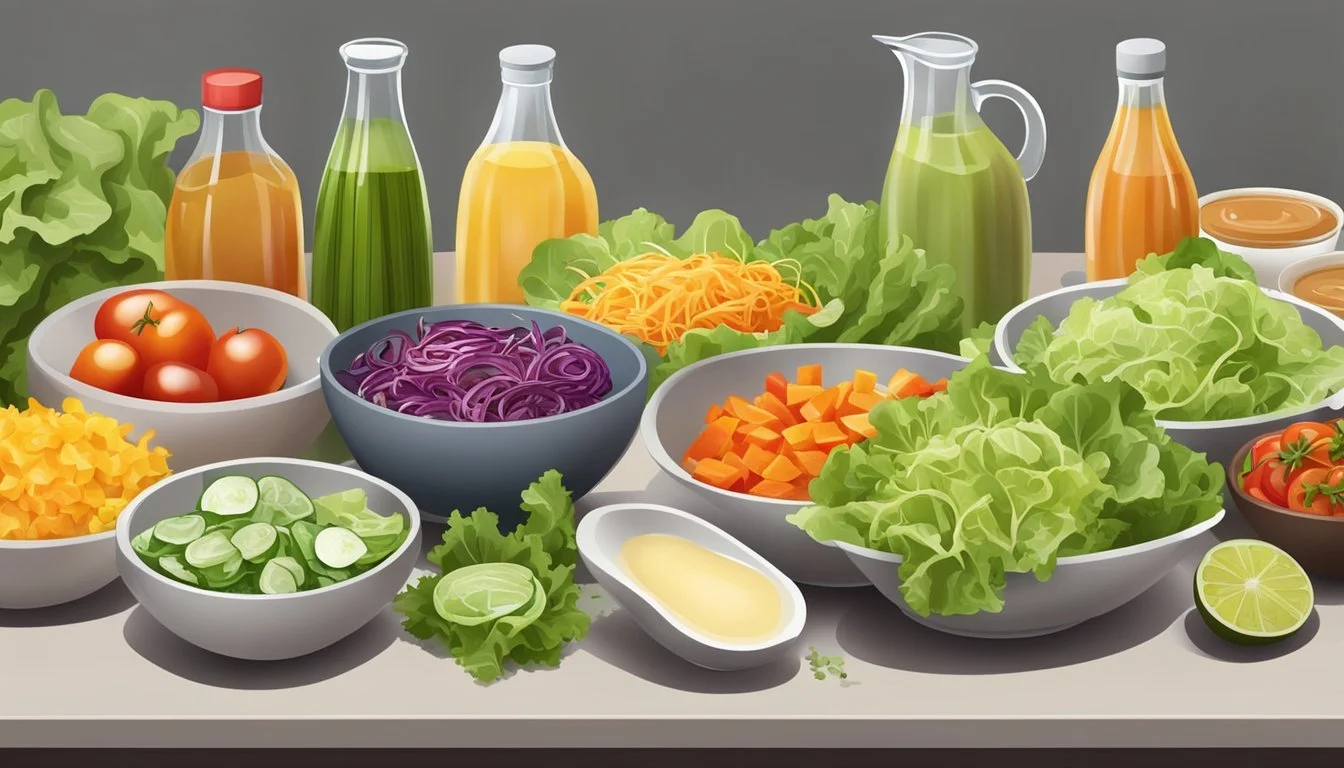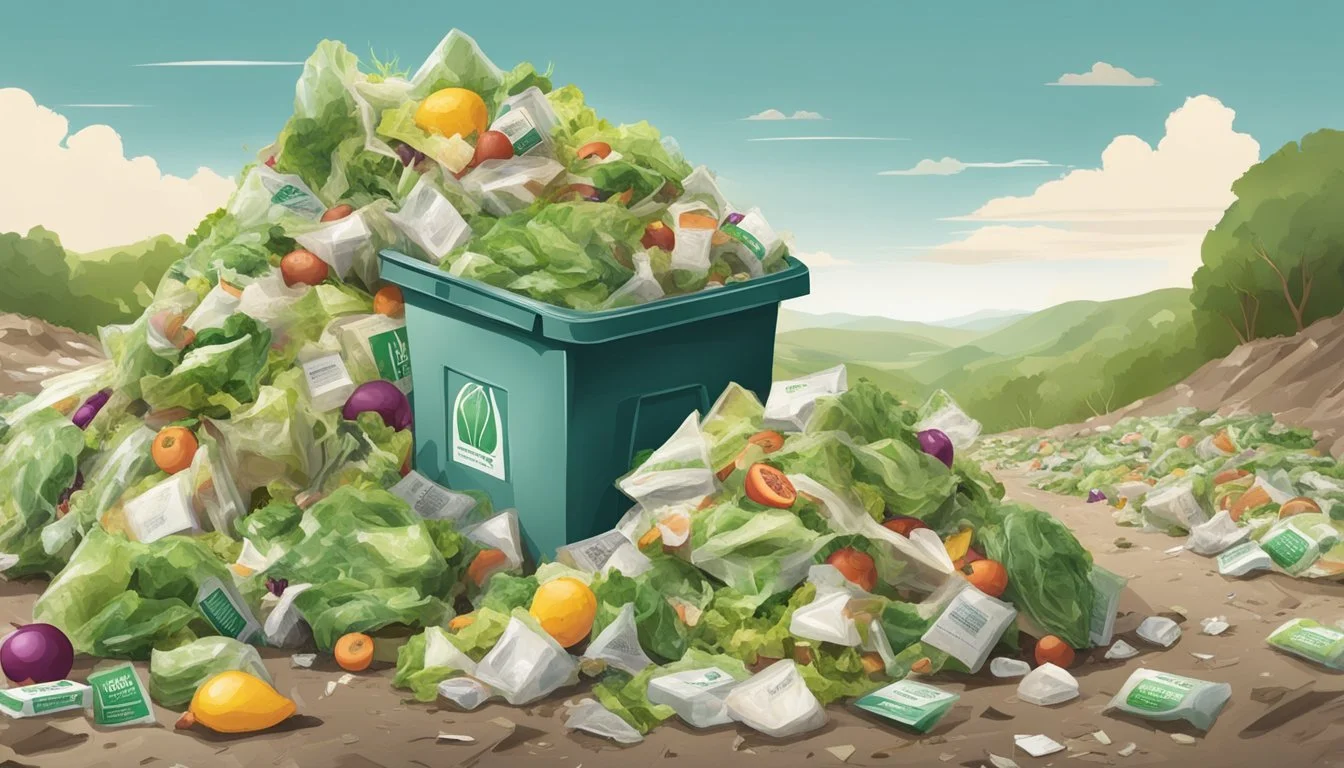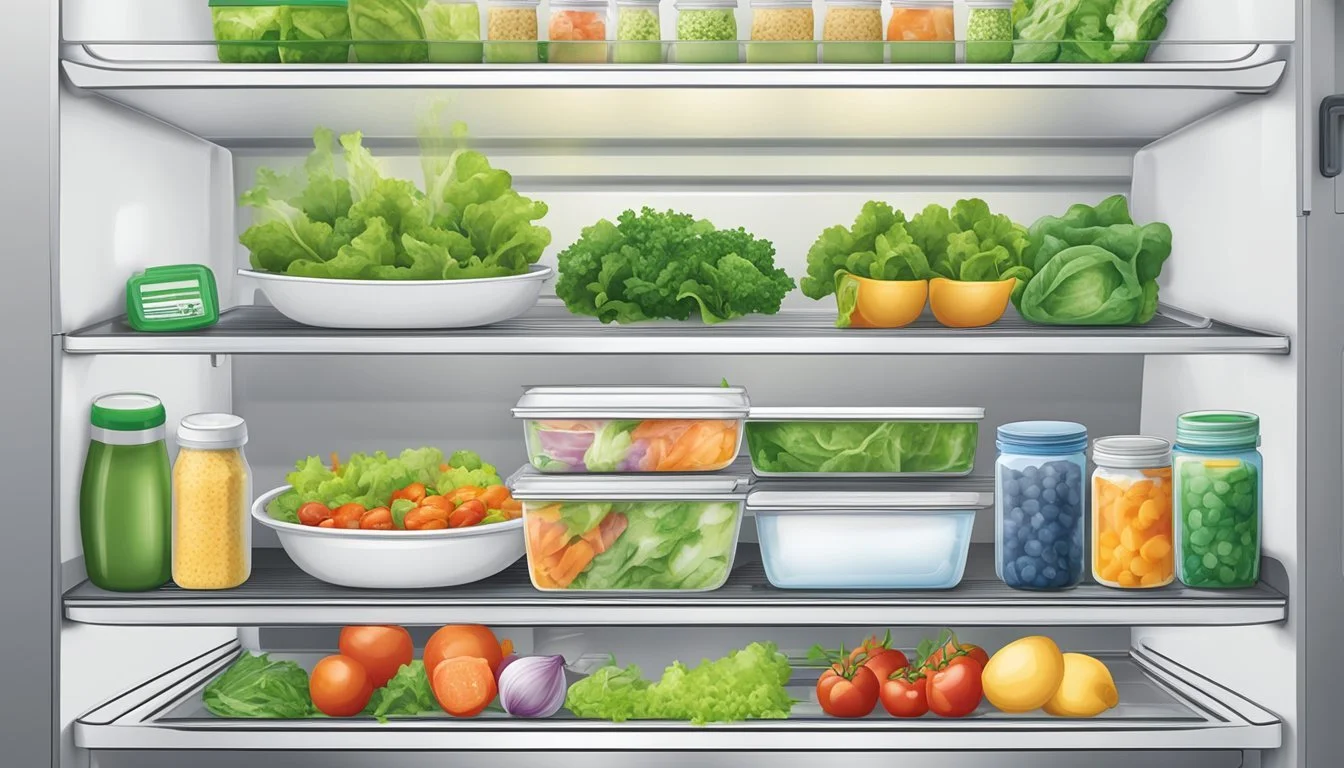How Long Do Salad Kits Last?
Shelf Life and Storage Tips
Salad kits have become a staple in many households, prized for their convenience and ability to provide a quick, healthy meal. Comprising pre-washed and chopped vegetables, these kits often include dressings and toppings, enabling a salad to be prepared with minimal effort. The freshness of these kits is a key factor in their appeal, with many consumers relying on them for a nutritious option when time is short.
Understanding the shelf life of salad kits is crucial for both safety and quality. Generally, unopened salad kits can be stored in the refrigerator and consumed within 7-10 days, or by the expiration date on the package. Once opened, the contents should be eaten within 3-5 days to ensure the best quality and freshness. Ensuring proper storage at or below 40 degrees Fahrenheit (4 degrees Celsius) in a refrigerator minimizes the risk of spoilage and extends the usability of the product.
The shelf life of salad kits can vary depending on the type of greens and ingredients included. For instance, robust vegetables like kale and cabbage may last longer than more delicate lettuces. Moisture levels, packaging integrity, and temperature fluctuations can also affect the lifespan of a salad kit. It is crucial for consumers to inspect the greens for any signs of wilting or spoilage before consumption and to adhere strictly to storage guidelines.
Understanding Salad Kits
Salad kits provide a convenient option for consumers seeking a nutritious and quick meal or side dish. These kits commonly include prewashed and chopped leafy greens such as kale, spinach, and arugula, as well as a variety of other veggies like cabbage or carrots. The convenience of salad kits is complemented by the inclusion of additional components like dressings, croutons, and nuts.
Components in Salad Kits:
Leafy greens: A mix that may include lettuce, spinach, kale, and arugula.
Additional veggies: Add-ins like shredded carrots or red cabbage.
Dressings and toppings: Various dressings and crunchy toppings like nuts or croutons.
Bagged salads (What wine goes well with salads?) are an extension of whole head lettuces, offering both quality and convenience for those who lack the time for extensive meal prep. In contrast to whole head lettuces, bagged salads streamline the salad-making process, although their shelf-life may differ. It is essential to store these bagged greens properly to maintain their freshness.
Shelf-Life Factors:
Packaging: Sealed to retain freshness.
Prewashing: Removed debris and residues.
Expiry date: Indicative of optimal freshness period.
Storage:
Unopened: Generally lasts 7-10 days refrigerated.
Opened: Best consumed within 3-5 days.
Consumers should be vigilant about expiration dates and storage conditions to ensure the green salad components remain safe and palatable. Salad kits are a practical solution for incorporating leafy greens into one's diet; however, they require attention to detail regarding their shelf life and conditions of storage to ensure quality and safety.
Storage Fundamentals
Proper storage extends the freshness and usability of a salad kit, emphasizing temperature control, container choice, moisture management, and the establishment of an ideal environment.
Refrigeration Techniques
Salad kits should be stored in the refrigerator immediately upon returning from the store to maintain optimal freshness. The fridge temperature should be between 36°F and 40°F (2°C and 4°C) for the best results. Utilize the crisper drawer if available, as it provides a space with high humidity, which is conducive to keeping greens crisp.
Container Selection
An airtight container is paramount for preserving salad kits. If a kit comes in a plastic bag or clamshell, consider transferring it to a plastic container that can be sealed tightly. Airtight containers prevent excess moisture from entering, which can lead to wilting and spoilage.
Handling Moisture
To tackle excess moisture, which can make salad greens soggy, line the container with paper towels to absorb it. After washing any fresh additions with a salad spinner, ensure they are dry before mixing them with the salad kit to prevent additional moisture from being introduced.
Optimal Storage Environment
Create an environment in the crisper drawer or container that balances moisture and air circulation. Avoid overcrowding, as this can stifle air flow and result in spoilage. Checking periodically to remove any wilted parts helps maintain freshness and prevents the spread of rot through the salad kit.
Maximizing Freshness
When it comes to extending the life of salad kits in your fridge, the main factors center around minimizing exposure to air and contaminants, maintaining an optimal temperature, and controlling moisture levels. These strategies help maintain the texture, quality, and health benefits of leafy greens.
Preventing Contaminants
The introduction of contaminants into your salad kit can rapidly decrease its freshness and potentially lead to food poisoning. To avoid this:
Wash your hands thoroughly before handling salads, even if the leaves are prewashed.
Ensure that your fridge is clean; leftovers and other food items should be well-sealed and stored away from your salad kit to reduce the risk of cross-contamination.
Smart Sealing Solutions
An effective seal not only keeps contaminants out but also manages moisture levels, retaining the texture and quality of your salad greens.
Use an airtight container: If the original packaging has been opened, transfer the greens to an airtight container, making sure there's minimal excess air inside.
Consider the crisper drawer: This part of the fridge is designed to keep produce fresh. Store your salad here ideally in its original sealed bag or an airtight container.
Temperature control: Your fridge should be at the correct temperature, typically below 40°F (4°C), to slow down bacterial growth.
Moisture regulation: If your salad starts to feel slimy, it's a sign of excess moisture - you can insert paper towels to absorb it, aiding in keeping the salad fresh longer without losing its crispness.
Identifying Freshness and Spoilage
When assessing the condition of salad kits, one needs to be aware of specific visual and olfactory clues that signal freshness or spoilage. These indicators help determine whether the salad is suitable for consumption.
Visual Indicators
Salad kits should exhibit vibrant green leaves without signs of decay. Discoloration is a clear indicator of spoilage; brown or black spots on the leaves imply that they have begun to rot. Moreover, one should be wary of any slimy leaves, as this suggests bacterial growth and spoilage. Fresh salads display a consistent color and texture throughout the container.
Texture and Smell
The texture of salad greens plays a crucial role in determining freshness. Leaves should feel crisp to the touch. If they have become soggy, mushy, or otherwise soft, this texture change generally occurs alongside spoilage. Healthy salad greens do not emit a foul odor; a sour or unpleasant smell typically signifies the presence of spoilage and bacterial activity.
How to Tell If Salad Is Bad
Salads are bad when they exhibit any of the signs of spoilage such as:
Wilting: Wilted leaves indicate the salad kit is past its prime.
Sliminess: A slimy texture on the greens shows bacterial growth.
Off-putting Smell: A bad odor is a telltale sign that the salad should no longer be consumed.
These signs of spoilage mean the salad should be discarded to avoid the risk of foodborne illness. It's crucial to trust these sensory cues when evaluating salad kits.
Shelf Life and Expiration
When considering the shelf life and expiration of salad kits, it's crucial to differentiate between salad types and packaging status—unopened or opened.
Deciphering Dates
Unopened salad kits often come with an expiration date printed on the packaging. This date indicates the latest point at which the product is expected to retain its quality. Bagged salad kits can last 3-5 days when kept in the refrigerator. If the kit includes non-mayonnaise-based pasta salad, it may last slightly longer, around 5-7 days. The actual freshness can depend on factors like the type of lettuce and how the greens were handled before packaging.
Handling Leftovers
Once the salad kit is opened, any leftovers should be consumed within a short time frame to avoid spoilage. Leftover prewashed salad mix should be eaten within 3-5 days of opening. To extend the life of leftovers and reduce food waste, they should be stored properly in the refrigerator at a consistent temperature. Fresh greens are delicate and can spoil quickly, so monitoring for signs of spoilage, such as wilting or a slimy texture, is important for ensuring the safety and quality of the salad.
Tips for Extending Salad Kit Life
Maximizing the shelf life of a salad kit hinges upon proper storage and handling, particularly when it comes to dressing application and temperature control.
Proper Salad Dressing Usage
To maintain the freshness of salad greens, applying dressing should be done just before consumption. Dressing prematurely can cause the lettuce leaves to wilt due to its liquid content and ingredients like mayonnaise that can accelerate spoilage. For extended shelf life, store the dressing in an airtight container and apply it to individual portions rather than the entire kit.
Tip: To apply dressing efficiently, consider using:
An airtight container for storage
A small spoon or ladle to drizzle dressing sparingly
Utilizing Cooling Accessories
Salads should be stored at a consistent, cool temperature to prevent wilting and spoilage. A crisper in the refrigerator is an ideal spot, as it offers a more regulated environment. When transporting salad kits or for temporary storage, an insulated cooler bag can be effective in keeping contents fresh.
Tip: To optimize the salad kit's environment, one can employ:
A paper towel laid on top of the lettuce inside the salad kit to absorb excess moisture
An insulated cooler bag when outside the refrigerator to maintain room temperature
Safe Consumption Guidelines
When it comes to salad kits, safety and shelf life are primarily influenced by storage conditions and signs of freshness. Consumers should follow FDA guidelines to mitigate the risk of food-borne illness, paying close attention to the salad's appearance and scent before consumption.
Following FDA Guidelines
The FDA advises that perishable products like salad kits be stored in the refrigerator immediately after purchase. A salad kit's shelf life can extend up to 7-10 days if left unopened in the fridge and up to the expiration date printed on the packaging. Once opened, the salad should be consumed within 3-5 days. It's essential to ensure that the refrigerator is set to a safe temperature, below 40°F (4°C), as it inhibits the growth of bacteria that can cause food poisoning.
Signs of Freshness:
Crispness of greens
No unpleasant odors
Absence of visible mold
Lack of excess moisture or sliminess
Addressing Food-Borne Illness
To minimize the risk of food-borne illness, consumers should be vigilant for signs that salad kits may no longer be safe to eat. Indicators such as sliminess, off-odor, and discoloration suggest bacterial growth. If any of these signs are present, the salad should be discarded. Cross-contamination during processing can introduce pathogens, making adherence to the 'Use By' date and proper storage paramount. One should also wash their hands before handling salad kits to prevent the transfer of bacteria.
Prevention Measures:
Check for spoilage signs before eating
Discard salads past their 'Use By' date
Wash hands before salad preparation
Ensure the salad is not left at room temperature for over 2 hours
Nutrient-dense foods like salads require proper handling and storage to maintain their food safety and quality. By following these guidelines, consumers can enjoy their salad kits with confidence about their freshness and safety.
Beyond Lettuce: Mixed Salad Components
Mixed salad kits offer more than just leafy greens; they often include a variety of proteins, vegetables, and additional ingredients that can affect the product's longevity. Understanding how these components interact is crucial for maintaining freshness and ensuring food safety.
Adding Protein and Veggies
Protein options, such as chicken, can be found in many mixed salad kits and provide a hearty element to the meal. When included, proteins may limit the salad's shelf life, as cooked meats are typically safe to consume for a shorter period when compared to plant-based components. For instance, if a salad kit contains cooked chicken, the overall product should be consumed within 1 to 2 days past its designated expiration date, assuming proper refrigeration.
Vegetables like cabbage, onions, and carrots are common in mixed salads and are known for their robust shelf life. When stored correctly within the refrigerator, items like cabbage may even extend the freshness of the entire kit due to their lower rate of spoilage. However, once the salad kit is opened, it is best to use these veggies within 3 to 5 days to enjoy optimal quality and taste.
Managing Additional Ingredients
Salad kits might also include high-risk components such as mayonnaise or pasta salad, which are susceptible to spoilage. Products containing mayonnaise should be used cautiously; mayonnaise can harbor bacteria if not stored at proper temperatures, thus shortening the kit’s overall shelf life. Refrigeration is paramount to keep these ingredients safe, and consumers are advised to consume them promptly — before the expiration date and ideally within 3-5 days of opening the package.
For dry and non-perishable add-ins, such as croutons or dried fruits, shelf stability is less of a concern. However, they should still be kept sealed and dry to maintain their intended texture and to prevent them from softening or becoming stale, which might degrade the overall quality of the salad experience.
By understanding the components within a salad kit and managing them appropriately, consumers can maximize both the safety and enjoyment of their meals.
Salad Kit Alternatives
When consumers are looking to extend the freshness of their salads beyond the typical 3-5 day window offered by salad kits, they might consider alternatives such as purchasing a bag of greens or assembling fresh greens into a custom mix.
Single Variety Greens
For a simple swap, one can opt for a bag of greens like spinach, arugula, or romaine. Storing these in the fridge can help maintain freshness, with many types staying crisp for up to a week when unopened.
Bagged spinach: 5-7 days
Bagged romaine: 7-10 days
Bagged arugula: 3-5 days
Custom Salad Mixes
Custom salad mixes can be made by selecting individual greens and combining them. This allows for more control over the ingredients and can potentially lead to longer freshness compared to pre-made kits.
Choose a base (e.g., kale, spinach, mixed greens)
Add a variety of vegetables (e.g., carrots, bell peppers, cucumbers)
Introduce proteins or grains (e.g., grilled chicken, quinoa)
Mix in a dressing before serving
Fresh Produce Handling
It's essential to handle fresh greens with care:
Wash before use
Dry thoroughly
Store in airtight containers
Keep refrigerated
By following these steps, individuals can enjoy crisp greens for a longer period, while avoiding the shorter shelf-life dilemma associated with prepackaged salad kits or bagged salad mixes.
Environmental Impact and Reducing Waste
The environmental impact of salad kits is twofold: the production and disposal of plastics, and the generation of food waste. Each factor contributes significantly to the overall carbon footprint of these convenient meal options.
Reducing Single-Use Plastics
Salad kits often come in plastic bags or plastic containers that are single-use and can contribute to environmental damage. These plastics are difficult to recycle and can take hundreds of years to degrade, leading to an increase in waste and pollution. Consumers can look for brands that use recyclable materials or reduce packaging to mitigate this impact.
Alternatives to Plastic Packaging:
Biodegradable plant-based containers.
Recyclable paper-based packaging.
Consumer Action:
Choose salad kits with minimal packaging.
Recycle according to local guidelines.
Minimizing Food Waste
Food waste is another crucial issue with salad kits. Since these kits are pre-portioned, they can help decrease food waste by providing the exact amounts needed. However, if not managed properly, unused portions of salad kits can lead to a significant amount of food waste. Consumers can reduce waste by:
Purchasing Practices:
Buying only the amount that can be reasonably consumed before the expiration date.
Checking the freshness of the salad kit before purchase.
Proper Storage:
Refrigerating salad kits promptly after purchase to extend their shelf life.
Following 'best by' dates to ensure consumption while the product is at its freshest.
By addressing plastic use and food waste, consumers and manufacturers can lessen the environmental burden of salad kits.
Special Considerations
In preserving the freshness of store-bought salad kits, specific approaches can significantly impact their shelf life.
Freezing Techniques
Freezing store salad is not recommended. Salad greens can become limp and lose their textural quality due to ice crystal formation. Even when considering freezing for extending shelf life, one should note that the delicate leaves of salads are susceptible to freezer burn, rendering them unpalatable upon thawing.
Three to Five Days Guideline
An unopened salad kit typically has a fridge shelf-life of three to five days. It's crucial to:
Check the expiration date upon purchase.
Store the salad in the fridge immediately.
Salad State Expected Freshness Duration Unopened Up to 7-10 days within the expiration date Opened 3-5 days from opening
To maximize freshness, avoid compressing the salad leaves and keep the bag sealed properly after each use.
Conclusion
When purchasing salad kits from the store, consumers should be aware of the product's expected shelf life. A salad kit typically remains fresh for 7-10 days if unopened and stored properly in the refrigerator. If the kit has been opened, it should ideally be consumed within 3-5 days to ensure optimal freshness and taste.
The presence of the terms "prewashed" or "triple-washed" on the packaging indicates that the greens have undergone cleaning processes, yet it is always prudent to examine the greens for freshness.
It is essential to observe the following aspects to determine the viability of a salad kit:
Expiration Date: Use this as an initial guideline.
Crispness: Ensure that the greens are still firm and not wilted.
Odor: Fresh greens should not have any unpleasant smell.
Visual Inspection: Avoid greens that exhibit signs of sliminess or discoloration.
Salad kits offer convenience and nutritional value, yet their longevity is contingent upon proper storage and prompt consumption. Consumers are advised to adhere to these guidelines to enjoy the benefits of a fresh, healthy salad.

